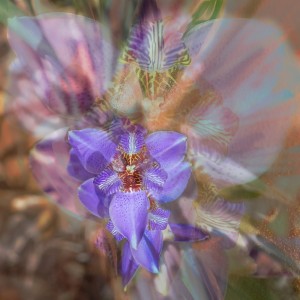Every year, millions of tree-loving tourists flock north to the forests of New England to drive too slowly and watch the leaves change color. It’s a time-honored tradition set to auto, running on a biological clock that ticks to the tune of billions of dollars each season. And it’s the same show every year. But in Sarasota, resident leaf-peepers and art enthusiasts partake of a different tradition, in a secluded destination where, once a year, the foliage transmogrifies into dazzling new shapes and startling configurations, a place where the line between art and nature grows exceedingly thin and the boundaries blur, a strange garden where plants hang in the sky like roiling green stars and flowers bloom where you least expect them.
Or as the folks over at Marie Selby Botanical Gardens call it, the annual Jean & Alfred Goldstein Exhibition. An annual celebration of the everlasting influence and inspiration that great artists have found in nature since the days of the first cave painting, Selby Gardens horticulturalists and curators and staff of all sorts come together to transform the campus through a series of living art installations paying homage to the artists who once paid homage to them. This year, in tribute to the work of counterculture icon Yayoi Kusama and her friendship with American modernist Georgia O’Keeffe, Selby Gardens staff take advantage of the newly expanded grounds to construct a whopping ten installations, including tunnels of tillandsia, psychedelic fields of floating rocks, and a secluded pond where desert cacti sprout from the black waters like dark miracles. And this month is the last chance to see.

“Our goal is always to tell a story and to create an experience,” says David Berry, chief museum curator at Selby Gardens. And that story always begins with the artist. But not just any artist. It’s not about what’s cool or what sells, but about finding someone whose connection to the natural world allows the opportunity for Selby Gardens to celebrate the artist and their inspiration all at once. “To make sure that these things are grounded in what we are: a scientific and botanical institution,” Berry says, and never lose sight of the forest for all the finely painted trees. The organization keeps a running list of such artists. Kusama and O’Keeffe both earned a spot years ago.
Growing up in the fields and greenhouses of her family’s nursery in Matsumoto, Kusama was sketching her humble pumpkins long before she would become famous for sculpting them. And she was a struggling artist before she could even know what that was, with a mother who actively discouraged her efforts and a father too busy philandering to care. At age 10, she began hallucinating, plagued by visions of flashing lights, endless fields of colorful polka dots, and talking flowers—all of which would eventually define her art. Today, Kusama is considered one of the most celebrated and successful artists in the entire world, an icon of the 1960s American avant-garde movement who’s remained working and relevant to this day, impacting everything from the world of fine art to fashion.

So where does O’Keeffe fit in? Not only was the famed American painter a fellow woman in a man’s art world and a like mind in her reverence for the beauty of the natural world, O’Keeffe was a direct inspiration for Kusama and an unlikely mentor, despite her reclusive nature. Kusama was only 27, unsure of herself and dreaming of New York City, when she reached out to O’Keeffe, sending a letter to the latter’s New Mexico retreat. To her surprise, O’Keeffe responded. This sparse correspondence—and one brief meeting—spurred Kusama onward.
Entering the Museum of Botany and the Arts, visitors can trace the course of this fateful meeting and mentorship in the artists’ own words, through handwritten letters on display. And they can take a small glimpse into O’Keeffe’s life through artifacts and old photographs. As the main focus, the majority of the exhibition is dedicated to showcasing Kusama’s work, and viewers can chart the trajectory of her celebrated career in everything from commercial projects for the likes of Louis Vuitton to paintings that took the art world by storm. Of course, Selby Gardens can’t help but put its own spin on the presentation, using micrograph prints, 3D models and even interactive microscope stations to highlight how the same colors and forms found in the most abstract of Kusama’s work can also be found in nature.

In the final room of the exhibition, dominating the entire far wall is Kusama’s Infinity Dots, a behemoth four-panel painting covered in light green circles of varying size over a dark blue almost black background. Rhythmic and mesmerizing, it’s easy to get lost within its borders and everyone who enters the room goes strangely quiet.
Out on the grounds, it’s a matter of life imitating art, as Selby Gardens horticulturalists take themes from Kusama’s work—repetition, circles and spheres, vibrant pops of red and orange—and craft living tributes of leaf and stem. “You’re converting one art form into another,” says Berry, and the palette is defined not just by color but by texture and form, by density, pattern and even smell. Sidewalk pathways become shaded tunnels of geometrically arranged tillandsia. Bright red circular planters full of lush red bromeliads are arranged in beds of white shell to pay homage to Kusama’s Infinity Dots. Hanging over the visitor’s center like a strange starfield of succulents are dozens of squat and spiny barrel cacti. “We’re going to learn how cacti like being suspended by its feet,” Berry says with a laugh. Weird science? Sure. But science nonetheless. And it’s the kind of science Selby Gardens has always excelled at—the kind that makes you look at things a little closer, see things a little differently, and maybe, just maybe, come away with renewed wonder.










